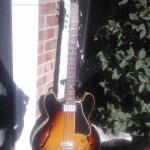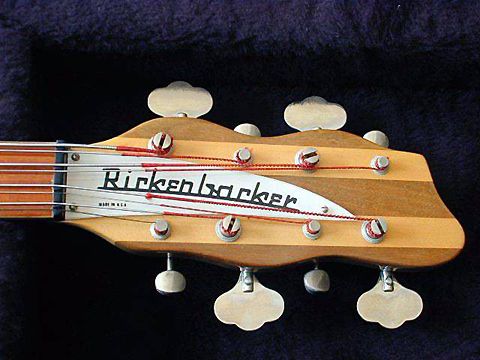You gotta love a good six-string bass. Tuned an octave lower than a guitar and considered the tuxedo T-shirt of basses among bassists, the instrument pops up in the strangest places, from industrial noisemaking to Jack Bruce’s early work in Cream to doubling an upright bass to get the “tic-tac” bass sound heard on Patsy Cline’s records and a lot of early post-Army Elvis records, like “Little Sister” and “(Marie’s the Name) His Latest Flame.” I can understand the traditionalist bass player’s contempt for the instrument; one of the commandments of a good, traditional bassline is that thou shalt not invade the guitar’s sonic territory, which a six-string bass almost dares a player to do.
Aside from Danelectros and Fender Bass VI’s, the pickin’s were slim for options during the first bloom of six-string-bass popularity in the late ’50s to early ’60s. The rarest and probably most expensive of these birds has to be the Gibson EB-6, the company’s short-scale [30 1/2″] 335-style response to Fender’s six-string bass.
The semi-solid 335 style of the EB-6 didn’t last long and only produced approximately 65 basses before being replaced in 1961 with a solid, SG-style body, matching the change in Les Pauls of the same period. It’s extremely likely that all 335 EB-6s sport the famous and ridiculously fetishized PAF [Patent Applied For] pickups in the neck position, which makes this rare guitar exponentially more pricey. Still, it looks supercool:
According to Gibson catalogs of the time, the EB-6 retailed for $325.00, roughly $2,600 in 2015 dollars.
——-
On the other side of America, Rickenbacker briefly made its own six-string bass in the mid-1960s, the semi-acoustic 4005/6 — good luck finding these for sale on Reverb or anywhere else:
I have issues with Rics, starting with their unfortunate conceit of finishing their rosewood fingerboards rather than letting the wood breathe and ending with their retail prices. They do have the coolest looking headstocks this side of Kay, especially in Rick’s natural “Mapleglo” finish. Here’s their eight-string [a doubled-course four string, like a 12-string guitar is a doubled-course 6-string] headstock:







